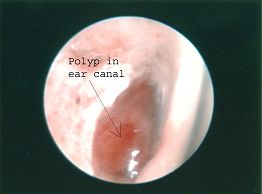Laparoscopic Spays
Advantages over Traditional Spay Technique:
| Minimally invasive ovariectomy is a major advancement over traditional spay surgery and Dr. Pardeshi is one of the few veterinarians in the country to offer this procedure.Traditional spays are performed through a 2-4″ incision into the abdomen through which the ovarian ligament is TORN from the abdominal wall. This tearing causes brusing to the abdominal wall and signficant post-operative pain. By performing the procedure laparscopically, the patient experiences less trauma and minimal pain.In a laparoscopic dog spay the procedure is performed through 2 / 3 small incisions in the abdomen, typically 5-10mm in size. With the laparoscope, we are able to perform the surgery with magnified views of the organs, allowing for greater precision. The ovarian ligament is carefully cauterized and when appropriate, ligated (rather than torn). With laparscopic spays we are able to offer our patients reduced pain, minimal recovery time and less trauma than traditional spays.Another improvement in this procedure is the removal of only the ovaries. This is done based upon a study published in the Journal of Veterinary Surgery in 2006.). This study compared ovariectomy (removal of the ovaries) to ovariohysterectomy (removal of ovaries and uterus). The ovariectomy procedure is even less traumatic to your pet when done laparscopically. This will enable your pet to return to normal activities sooner, have less discomfort, and your pet will not usually need an E-collar.Not all pets are candidates for laparoscopic spays. Because of this, a pre-surgical evaluation by Dr. Pardeshi is required before an appointment can be scheduled. |
| • Are there any disadvantages to Laparoscopic Spays over the traditional method? Laparoscopic surgeries cost a little more due to the additional training required by the doctor and the signficant investment in equipment including the scopes, video monitors, ports, and specially designed laparscopic instruments.Because of the size of the patient and the size of the instrumentation, there is not a significant benefit tohave the procedure done laparoscopically.Video otoscopy showing why a chronic recurring ear infection was happening in this dog. After thoroughly cleaning out the ear canal, a tear in the ear drum was found causing a middle ear infection. Before coming to us, the dog had never had an ear flush performed under anesthesia so the ears were never properly cleaned out before using medication. After we found the tear in the ear drum, we flushed out the middle ear and then put this dog on about 4 weeks of oral antibiotics and ear medications. The ear drum repaired itself after a couple weeks and the dog has never been happier. |
| Removing an ear poly from a cat’s ear. The ear poly was causing recurring ear infections. | Flushing a dog’s ear using the laparoscope. Notice the difference from before and after the flushing. |

Flushing a dog’s ear using the laparoscope. Notice the difference from before and after the flushing.

Removing an ear poly from a cat’s ear. The ear poly was causing recurring ear infections.

